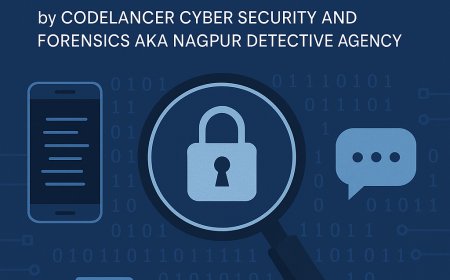Zero Trust Network Access (ZTNA): Strengthening Your Cybersecurity in the Modern Era in Thane

In today’s rapidly evolving digital landscape, businesses are increasingly adopting remote work and cloud-based solutions, making traditional perimeter-based security models less effective. To combat the growing threat of cyberattacks, organizations must rethink their security strategies. Zero Trust Network Access (ZTNA) is a modern security framework that can help organizations secure their networks, protect sensitive data, and ensure that only authorized users and devices can access critical resources. This guide outlines how ZTNA can enhance your organization's cybersecurity posture.
Understanding Zero Trust Network Access (ZTNA)
Zero Trust Network Access (ZTNA) is a cybersecurity model based on the principle of "never trust, always verify." Unlike traditional security models that rely on perimeter defenses (such as firewalls), ZTNA assumes that every device, user, and network request is potentially compromised. Therefore, access to corporate resources is only granted after verifying identity, device security, and other contextual factors—regardless of the user's location or network.
Key Benefits of ZTNA
● Improved Security: By enforcing strict access controls and verifying all users and devices, ZTNA significantly reduces the risk of unauthorized access to corporate resources.
● Minimized Attack Surface: ZTNA ensures that users and devices only have access to the specific resources they need, limiting potential vulnerabilities.
● Enhanced Visibility: ZTNA solutions provide real-time monitoring and auditing, allowing organizations to track user activity and detect anomalous behavior quickly.
● Scalability: As organizations expand their digital infrastructure, ZTNA can scale to provide secure access to new applications and data across diverse environments.
Key Strategies for Implementing ZTNA
● Adopt a Zero Trust Approach
○ Identity Verification: Use strong authentication mechanisms, such as multi-factor authentication (MFA), to verify user identity before granting access.
○ Least-Privilege Access: Ensure that users and devices only have access to the minimum resources they need to perform their job functions, reducing exposure to sensitive data.
○ Continuous Monitoring: Continuously assess user behavior and device health to ensure that access remains secure and in line with security policies.
● Secure Remote and Cloud Access
○ Unified Access Control: Implement ZTNA solutions that provide secure access to both on-premises and cloud-based resources, ensuring consistent protection across your entire network.
○ Device Security Checks: Before allowing a device to access network resources, verify that it complies with security policies, such as having up-to-date antivirus software and device encryption.
● Enable Micro-Segmentation
○ Network Segmentation: Use micro-segmentation to create smaller, isolated network segments, reducing the potential impact of any breach and preventing lateral movement within the network.
○ Application-Level Protection: Control access to individual applications and services, preventing unauthorized users from gaining access to critical systems.
● Implement Contextual Access Policies
○ Context-Aware Access: Factor in the context of each access request, such as location, device type, and time of day, to enforce adaptive access policies that adjust based on risk.
○ Risk-Based Decisions: Use machine learning and threat intelligence to assess the risk of access requests and dynamically adjust security measures based on potential threats.
How Codelancer Cybersecurity & Forensics Can Help
At Codelancer Cybersecurity & Forensics, we specialize in helping businesses implement ZTNA solutions tailored to their unique needs. Our services include:
● ZTNA Assessment and Strategy: We conduct a comprehensive analysis of your existing security posture and design a customized ZTNA strategy to ensure secure access to your corporate resources.
● Zero Trust Architecture Implementation: Our team deploys and configures ZTNA technologies, including identity and access management (IAM) solutions, micro-segmentation, and secure remote access tools.
● User and Device Authentication Solutions: We implement robust multi-factor authentication (MFA) and endpoint security measures to verify user identity and device health before granting access.
● Continuous Monitoring and Incident Response: We offer real-time monitoring and automated alerts to detect suspicious behavior and respond quickly to potential security incidents.
● Employee Training: We provide training to ensure that your employees understand ZTNA concepts and best practices for maintaining secure access to company resources.
Conclusion
Zero Trust Network Access (ZTNA) is an essential strategy for modern cybersecurity. By ensuring that all users, devices, and network traffic are continuously authenticated and verified, ZTNA helps businesses safeguard sensitive data, reduce the risk of cyberattacks, and maintain operational integrity. Implementing ZTNA is a proactive approach to securing your network in an increasingly complex and distributed digital environment.
What's Your Reaction?







































